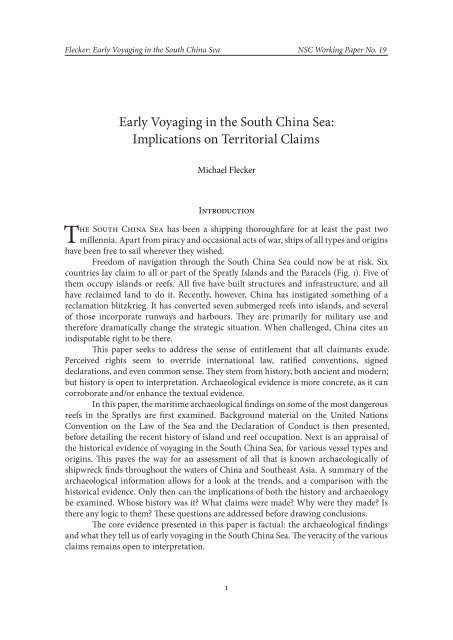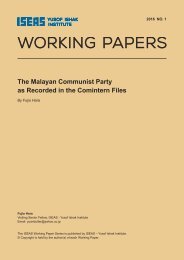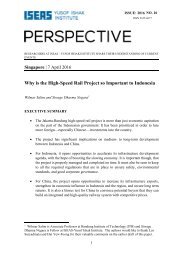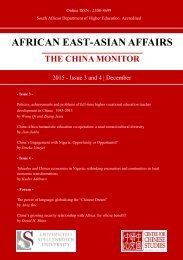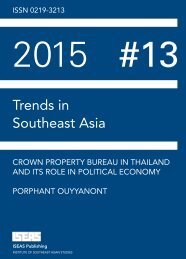NO.19
nscwps19_early_voyaging_south_china_sea_implications_territorial_claims
nscwps19_early_voyaging_south_china_sea_implications_territorial_claims
You also want an ePaper? Increase the reach of your titles
YUMPU automatically turns print PDFs into web optimized ePapers that Google loves.
Flecker: Early Voyaging in the South China Sea NSC Working Paper No. 19Early Voyaging in the South China Sea:Implications on Territorial ClaimsMichael FleckerIntroductionThe South China Sea has been a shipping thoroughfare for at least the past twomillennia. Apart from piracy and occasional acts of war, ships of all types and originshave been free to sail wherever they wished.Freedom of navigation through the South China Sea could now be at risk. Sixcountries lay claim to all or part of the Spratly Islands and the Paracels (Fig. 1). Five ofthem occupy islands or reefs. All five have built structures and infrastructure, and allhave reclaimed land to do it. Recently, however, China has instigated something of areclamation blitzkrieg. It has converted seven submerged reefs into islands, and severalof those incorporate runways and harbours. They are primarily for military use andtherefore dramatically change the strategic situation. When challenged, China cites anindisputable right to be there.This paper seeks to address the sense of entitlement that all claimants exude.Perceived rights seem to override international law, ratified conventions, signeddeclarations, and even common sense. They stem from history, both ancient and modern;but history is open to interpretation. Archaeological evidence is more concrete, as it cancorroborate and/or enhance the textual evidence.In this paper, the maritime archaeological findings on some of the most dangerousreefs in the Spratlys are first examined. Background material on the United NationsConvention on the Law of the Sea and the Declaration of Conduct is then presented,before detailing the recent history of island and reef occupation. Next is an appraisal ofthe historical evidence of voyaging in the South China Sea, for various vessel types andorigins. This paves the way for an assessment of all that is known archaeologically ofshipwreck finds throughout the waters of China and Southeast Asia. A summary of thearchaeological information allows for a look at the trends, and a comparison with thehistorical evidence. Only then can the implications of both the history and archaeologybe examined. Whose history was it? What claims were made? Why were they made? Isthere any logic to them? These questions are addressed before drawing conclusions.The core evidence presented in this paper is factual: the archaeological findingsand what they tell us of early voyaging in the South China Sea. The veracity of the variousclaims remains open to interpretation.1


